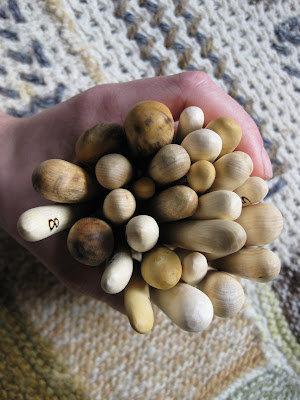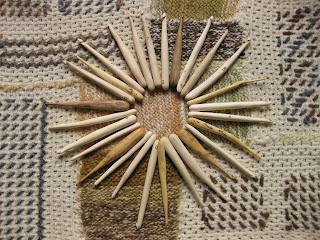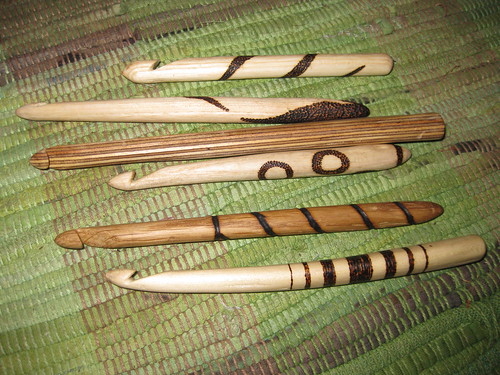As any of you who know me will be aware, I am a young craftsman based in the West Country, scratching a living
from carving spoons, cups, Box wood crochet hooks, and other treen. I am
fascinated by traditional crafts and woodland management and am
determined that I will make a living from these things. Because of this I
have decided to do an apprenticeship in the area of coppicing and green
woodworking.

Coppicing is a form of sustainable forestry that has been practised for
thousands of years. Deciduous trees are cut, low to the ground, and
instead of the stump dying off, as would happen with most conifers, new
shoots are sent out. If the woodland is managed well, these shoots will
grow straight and true and will be cut again in later years when deemed
sizeable enough for their intended usage. This form of management
dramatically extends the life of individual trees, as they are kept in
the juvenile stage of their life cycle and there are less stresses
placed on the tree by weighty limbs.
This form of woodland management means that timber and other wooden
products can be harvested from a woodland almost indefinitely, with
little need for replanting. It is also very beneficial for wildlife. The
soil is not disturbed and so delicate species of flora and fauna can
flourish, many of which favour the various stages of a coppice rotation
over full canopy coverage.
However, in recent decades this sort of management has declined, in
favour of the short term return of conifer plantations and as other
materials such as plastics replace wood in many aspects of life. Sadly,
when a coppice woodland is abandoned it becomes overstood – the stems
may grow too large and twisted to be useful for anything other than
firewood, and the stools (coppiced trees) will begin to tear themselves
apart, letting in rot and disease. In a relatively short time the
woodland becomes unproductive and lacks the biodiversity of an
in-rotation coppice. It is then a substantial undertaking for anyone
wishing to again harvest a useful product from the woodland.
 |
| Coppice stool that has torn itself apart |
As people are beginning to realise the threat of climate change and the
part that an over reliance on fossil fuels and imported products plays
in that, coppicing is once again becoming important. Coppice products
can reduce our reliance on foreign imports of timber as well as
providing us with locally sourced building materials, fencing, firewood,
furniture, food and much more. It is necessary to revive this ancient,
but still relevant practise, in order to become more sustainable and
self-reliant as an island.
I have been making things out of wood for a good few years now,
gradually honing my whittling skills, as well as getting out into the
woods and trying as many different aspects of green woodworking as
possible. Now I feel that the time has come for me to get my teeth into
coppicing by training with an expert, so that I can practise the
sustainable woodland management that I feel to be so important. Tim
Gatfield at the
Cherry Wood Project
has agreed to take me on as an apprentice for a year, but to make this
happen, I need to find the funding to support me in buying the tools,
equipment and training necessary, as well as a small amount to cover my
living costs for the year.
 |
| The Cherry Wood outdoor kitchen |
During this year I would be restoring derelict coppice, by cutting
overstood stools, replanting to increase the density, felling and
milling conifers and deer fencing to protect the newly cut and planted
trees. I would also learn many different aspects of green woodworking
and related skills including making furniture, hurdles, bowl turning and
earth oven building, as Tim runs many different courses in traditional
skills.
By donating towards my apprenticeship fund you are helping to keep
traditional skills alive and encourage sustainable woodland management.
You can donate to my fund by clicking on the donate button on the right
hand side of my blog.
Thank you for any contributions.
Pete
































